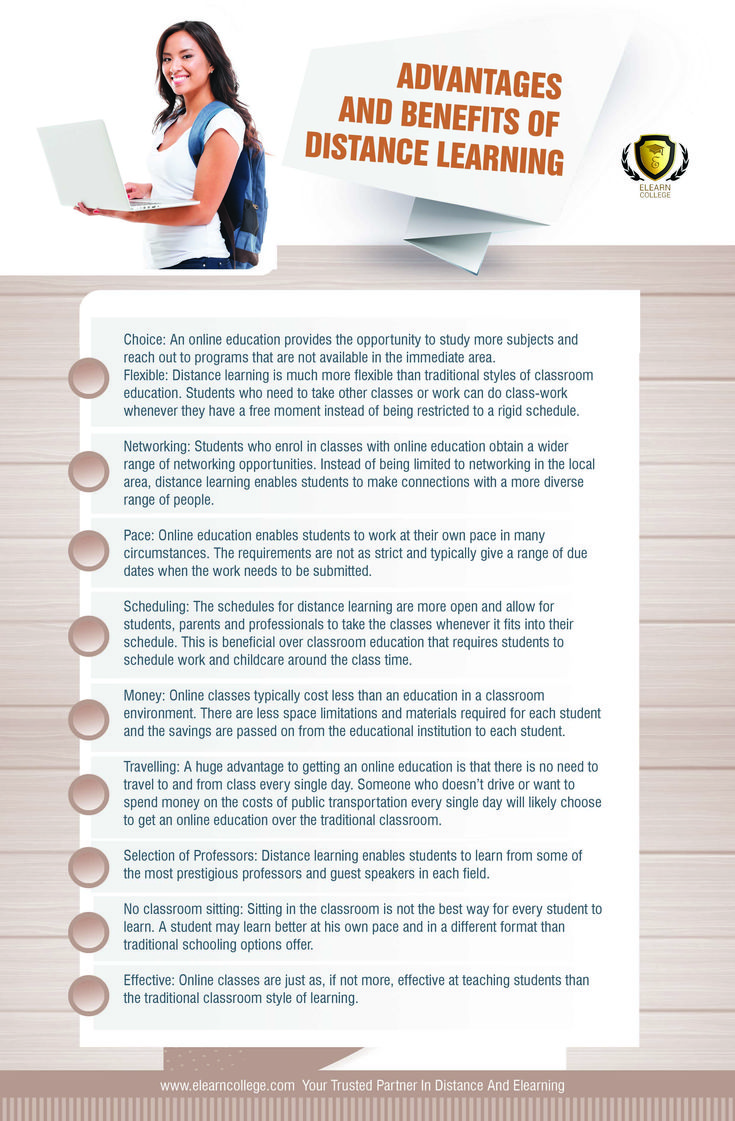7 Ways To Make The Ultimate Distance Learning Experience

Introduction

Distance learning, also known as online learning or remote education, has become increasingly popular in recent years, especially with the advancements in technology and the global shift towards digital solutions. It offers flexibility, convenience, and accessibility to learners, allowing them to pursue their educational goals from the comfort of their own homes. However, creating an effective and engaging distance learning experience requires careful planning and implementation. In this blog post, we will explore seven essential ways to enhance the distance learning journey and make it truly ultimate.
1. Create a Structured and Engaging Curriculum

A well-designed curriculum is the foundation of a successful distance learning program. When developing the curriculum, consider the following:
Learning Objectives: Clearly define the learning goals and outcomes for each course or module. Ensure that the objectives are aligned with the overall educational objectives and meet the needs of the target audience.
Content Organization: Organize the content in a logical and structured manner. Break down the material into manageable sections or units, making it easier for students to navigate and understand. Use headings, subheadings, and bullet points to enhance readability.
Interactive Elements: Incorporate interactive elements to engage students and enhance their learning experience. This can include multimedia resources such as videos, audio clips, interactive simulations, and virtual reality experiences. These elements can make the learning process more dynamic and captivating.
Collaborative Activities: Encourage collaboration and peer interaction by incorporating group projects, discussion forums, or online study groups. Collaborative activities foster a sense of community and allow students to learn from one another, enhancing their overall learning journey.
2. Utilize Advanced Technology and Tools

Technology plays a crucial role in distance learning, and leveraging the right tools can greatly enhance the educational experience. Here are some key technology considerations:
Learning Management System (LMS): Implement a robust LMS to manage and deliver course content effectively. Choose an LMS that offers features such as course organization, assignment submission, grading, and student progress tracking. Some popular LMS platforms include Moodle, Canvas, and Blackboard.
Video Conferencing: Video conferencing tools enable real-time interaction between instructors and students. They facilitate live lectures, virtual office hours, and group discussions. Zoom, Microsoft Teams, and Google Meet are widely used video conferencing platforms that offer a range of features for distance learning.
Collaborative Platforms: Explore collaborative platforms like Google Workspace (formerly G Suite) or Microsoft Office 365, which provide tools for real-time collaboration on documents, presentations, and projects. These platforms allow students and instructors to work together seamlessly, regardless of their physical location.
Mobile Accessibility: Ensure that the distance learning platform and resources are optimized for mobile devices. Many students prefer accessing content on their smartphones or tablets, so it is essential to provide a user-friendly and responsive mobile experience.
3. Foster a Sense of Community and Support

Building a strong sense of community and providing support to distance learners is vital for their success and engagement. Consider the following strategies:
Instructor Presence: Establish a strong instructor presence by regularly interacting with students. Respond promptly to their queries, provide feedback on assignments, and offer guidance and encouragement. This helps create a personal connection and makes students feel valued.
Student Support Services: Offer comprehensive student support services, including academic advising, tutoring, and technical assistance. Ensure that students have easy access to these services and provide multiple channels of communication, such as email, live chat, or dedicated support forums.
Online Communities: Create dedicated online communities or discussion boards where students can connect, share ideas, and support each other. These communities can foster a sense of belonging and provide a platform for students to seek help, share resources, and celebrate their achievements.
Virtual Social Events: Organize virtual social events or study groups to bring students together and create a sense of camaraderie. These events can include online game nights, virtual coffee breaks, or even virtual field trips, allowing students to interact and build relationships beyond the classroom.
4. Personalize the Learning Experience

Every student has unique learning needs and preferences. Personalizing the distance learning experience can greatly enhance their engagement and motivation. Here’s how you can achieve this:
Adaptive Learning: Implement adaptive learning technologies that tailor the content and pace of learning to individual students. These technologies use algorithms to identify areas where students may be struggling and provide targeted interventions or additional resources.
Self-Paced Learning: Offer self-paced learning options, allowing students to progress through the course material at their own speed. This approach accommodates different learning styles and enables students to dedicate more time to challenging concepts or accelerate through familiar topics.
Personalized Feedback: Provide personalized feedback on assignments and assessments. Offer constructive comments and suggestions that address each student’s specific strengths and areas for improvement. This personalized feedback helps students understand their progress and motivates them to continue learning.
Individualized Support: Offer individualized support to students who may require additional assistance. This can include one-on-one sessions with instructors, additional resources, or access to specialized support services to address their unique needs.
5. Enhance Student Engagement and Interaction

Engaging students actively in the learning process is crucial for their retention and understanding of the material. Here are some strategies to enhance student engagement:
Interactive Assignments: Design assignments that require active participation and critical thinking. Encourage students to apply their knowledge through case studies, problem-solving activities, or real-world projects. Interactive assignments promote deeper learning and help students develop practical skills.
Gamification: Incorporate elements of gamification into the distance learning experience. Use leaderboards, badges, or points systems to motivate students and create a sense of competition. Gamification can make learning more enjoyable and encourage students to actively participate.
Discussion Forums: Create dedicated discussion forums for each course or module. Encourage students to participate in meaningful discussions, share their thoughts, and engage in constructive debates. Regularly monitor and moderate these forums to ensure a positive and inclusive learning environment.
Peer Review and Feedback: Implement peer review processes where students provide feedback on each other’s work. This not only fosters a sense of community but also helps students develop critical evaluation skills and improve their own work based on constructive feedback.
6. Provide Regular Assessments and Feedback

Assessments and feedback are essential components of the learning process. They help students gauge their progress, identify areas for improvement, and reinforce their understanding of the material. Consider the following:
Diverse Assessment Methods: Offer a variety of assessment methods, such as quizzes, exams, projects, and presentations. This ensures that students with different learning styles and preferences have multiple opportunities to demonstrate their knowledge and skills.
Timely Feedback: Provide timely and constructive feedback on assessments. Offer specific comments that highlight both the strengths and areas for improvement. Timely feedback allows students to make necessary adjustments and stay on track with their learning goals.
Self-Assessment Tools: Incorporate self-assessment tools or rubrics that allow students to evaluate their own work. This promotes self-reflection and encourages students to take ownership of their learning. Self-assessment tools can also help instructors identify areas where additional support may be needed.
Formative Assessment: Implement formative assessment techniques, such as frequent low-stakes quizzes or short reflective assignments. These assessments provide ongoing feedback and allow instructors to identify misconceptions or knowledge gaps early on, enabling timely interventions.
7. Continuous Improvement and Evaluation

Distance learning programs should be continuously evaluated and improved to ensure their effectiveness and meet the evolving needs of students. Here are some key considerations:
Student Feedback: Regularly collect feedback from students through surveys, focus groups, or one-on-one interviews. Gather their insights on the curriculum, teaching methods, technology, and overall learning experience. This feedback is invaluable for identifying areas of improvement and making informed decisions.
Analytics and Data Analysis: Utilize analytics tools to track student engagement, participation, and performance. Analyze data to identify trends, patterns, and areas where students may be struggling. Data-driven insights can guide curriculum revisions, instructional strategies, and support services.
Peer Review and Professional Development: Encourage instructors to engage in peer review and professional development activities. This allows them to share best practices, learn from each other, and stay updated with the latest distance learning methodologies and technologies.
Regular Curriculum Review: Establish a regular curriculum review process to ensure that the content remains relevant, up-to-date, and aligned with industry standards. Regular reviews allow for the integration of new research, emerging technologies, and feedback from both students and subject matter experts.
Conclusion

Creating an ultimate distance learning experience requires a holistic approach that considers curriculum design, technology integration, community building, personalization, engagement, assessment, and continuous improvement. By implementing the strategies outlined above, educators and institutions can deliver high-quality, engaging, and effective distance learning programs that meet the diverse needs of learners. As distance learning continues to evolve, embracing these practices will contribute to a more enriching and successful educational journey for students worldwide.
FAQ

What are some best practices for creating engaging video lectures in distance learning?

+
When creating video lectures, it’s important to keep them concise, well-structured, and visually appealing. Use clear and simple language, and incorporate visual aids, animations, or real-life examples to enhance understanding. Additionally, consider adding interactive elements, such as polls or quizzes, to engage students during the lecture.
How can I ensure effective communication and collaboration among distance learning students?

+
Encourage regular communication and collaboration by setting up dedicated discussion boards, group projects, or virtual study groups. Provide clear guidelines and expectations for online interactions, and ensure that students have access to multiple communication channels, such as email, instant messaging, or video conferencing.
What are some strategies to prevent plagiarism and promote academic integrity in distance learning?

+
Implementing plagiarism detection tools, such as Turnitin or Grammarly, can help identify potential instances of plagiarism. Additionally, educate students about the importance of academic integrity and provide clear guidelines on proper citation and referencing. Encourage original thinking and critical analysis by assigning creative projects or requiring students to reflect on their learning journey.
How can I support students with different learning styles and abilities in distance learning?

+
Offer a variety of learning materials and resources, such as text-based content, videos, infographics, or interactive simulations, to cater to different learning styles. Provide clear instructions and guidelines for each activity, and consider offering additional support or accommodations for students with specific learning needs or disabilities. Regularly assess student progress and provide individualized feedback to address their unique challenges.
What are some tips for effective time management and organization in distance learning?

+
Encourage students to create a structured schedule and set aside dedicated time for their distance learning activities. Provide clear deadlines and due dates for assignments and assessments. Offer tips and strategies for effective time management, such as breaking down tasks into smaller, manageable chunks, and using productivity tools or apps to stay organized.



